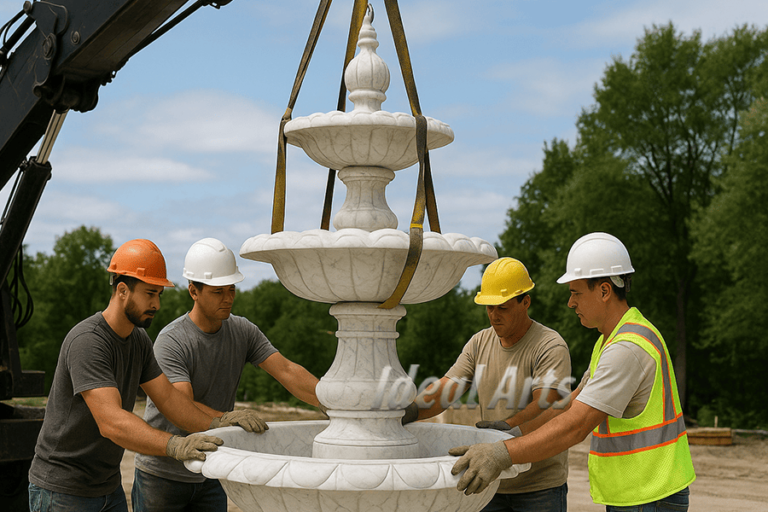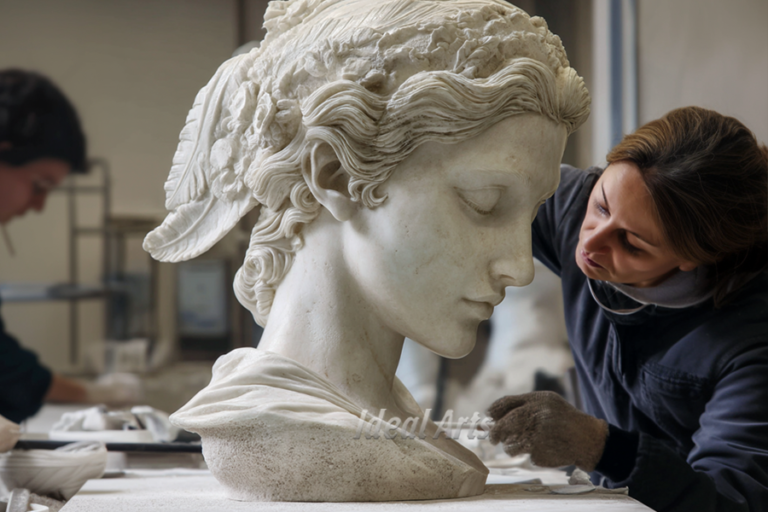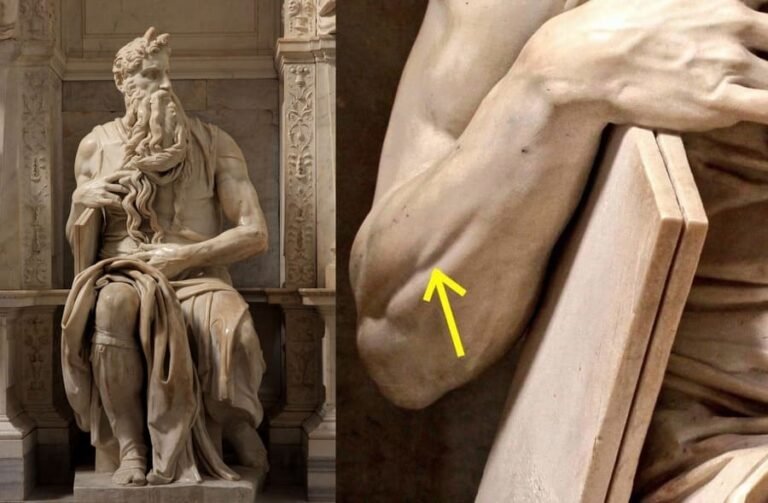Aphrodite, the goddess of love, beauty, and desire, has captivated humanity for centuries. From ancient temples to modern artwork, her presence is unmistakable. But what truly represents her divine essence? Her symbols—each carrying deep meanings—continue to influence art, culture, and even modern beliefs about beauty and love.
Aphrodite’s most recognized symbols include the dove, seashell, mirror, rose, apple, and myrtle. These objects represent love, passion, fertility, and vanity. The dove symbolizes peace and romance, while the seashell signifies her mythological birth from the sea. The mirror reflects both physical and inner beauty, and the rose is tied to passion. The apple represents temptation and beauty, while myrtle is a plant associated with love and marriage.
Each of these symbols has a long history in Greek mythology and beyond. They appear in ancient literature, statues, paintings, and even modern jewelry and tattoos. Understanding their meanings helps us appreciate Aphrodite’s influence on history and contemporary culture.
The Meaning Behind Aphrodite’s Symbols
Aphrodite’s symbols are not random; they were chosen because they reflect different aspects of her power. Let’s explore the deeper meanings behind each one.
1. The Dove: Love and Peace
The dove is one of Aphrodite’s most famous symbols. In ancient Greece, doves were associated with love, harmony, and divine beauty.
| Symbol | Meaning | Usage in Art |
|---|---|---|
| Dove | Love, purity, peace | Seen in Aphrodite’s temples and artworks |
| Two doves | Romantic love, partnership | Often depicted in wedding imagery |
| Dove with a ribbon | Fidelity, devotion | Common in ancient Greek jewelry |
The dove remains a universal symbol of love and peace today. It is often released at weddings and ceremonies to represent eternal love and unity.

2. The Seashell: Aphrodite’s Birth and Beauty
Aphrodite’s connection to the seashell comes from her most famous myth—her birth from the sea. In Hesiod’s Theogony, she emerges from the ocean on a scallop shell, fully grown and more beautiful than any other goddess.
| Symbol | Meaning | Example in Art |
|---|---|---|
| Seashell | Birth, femininity, divine beauty | Botticelli’s The Birth of Venus |
| Open shell | Fertility, new beginnings | Common in Greek and Roman frescoes |
| Pearl inside shell | Hidden beauty, purity | Symbolic in Aphrodite-inspired jewelry |
The image of Aphrodite on a seashell remains one of the most iconic depictions of beauty in Western art.

3. The Mirror: Vanity and Self-Adoration
Aphrodite’s mirror is a powerful symbol of beauty and self-awareness. In many statues and paintings, she is depicted holding a mirror, admiring herself.
| Symbol | Meaning | Cultural Influence |
|---|---|---|
| Mirror | Reflection, self-love, vanity | Common in Aphrodite’s statues |
| Broken mirror | Lost beauty, aging | Used in storytelling and myths |
| Mirror with a dove | Love and self-admiration | Found in Greek mosaics |

This symbol also reflects the idea that beauty is both external and internal. While Aphrodite represents physical beauty, her mirror reminds us of self-perception and confidence.
4. The Rose: Love and Passion
Roses have been linked to Aphrodite for thousands of years. The red rose, in particular, represents deep passion and romance.
| Symbol | Meaning | Cultural Connection |
|---|---|---|
| Red rose | Love, passion, desire | Common in love poetry and art |
| White rose | Purity, innocence | Used in Greek and Roman ceremonies |
| Rose with thorns | Love and pain | Symbolic in tragic love stories |
The connection between Aphrodite and roses continues today, as roses remain the most popular flowers for romantic occasions.
5. The Apple: Beauty and Desire
The apple became one of Aphrodite’s most famous symbols due to the Judgment of Paris. In this myth, she won a beauty contest by offering Paris the most beautiful woman, Helen of Troy.
| Symbol | Meaning | Story Connection |
|---|---|---|
| Golden apple | Ultimate beauty | Given to Aphrodite by Paris |
| Apple in hand | Desire, attraction | Seen in Greek sculptures |
| Apple tree | Forbidden love | Referenced in mythology and folklore |

This symbol connects Aphrodite to both love and the conflicts it can create—after all, her involvement led to the Trojan War.
6. Myrtle: Eternal Love and Marriage
Myrtle was considered sacred to Aphrodite and was used in wedding rituals in ancient Greece. It represented lasting love and devotion.
| Symbol | Meaning | Traditional Use |
|---|---|---|
| Myrtle wreath | Eternal love | Worn by Greek brides |
| Myrtle leaves | Marital happiness | Used in wedding decorations |
| Myrtle and doves | Divine love | Found in Aphrodite’s temples |

Even today, myrtle is used in bridal bouquets and wedding ceremonies, keeping Aphrodite’s legacy alive.
Aphrodite’s Symbols in Modern Culture
Aphrodite’s symbols are not just relics of the past—they are still present in modern culture. From Valentine’s Day decorations to perfume bottles, her influence is everywhere.
- Doves are still symbols of peace and love, often released at weddings.
- Seashells appear in jewelry and beauty branding, representing femininity.
- Mirrors symbolize self-reflection and beauty in modern psychology.
- Roses remain the ultimate flowers of love and passion.
- Apples are still linked to beauty and temptation in literature and films.
- Myrtle continues to be used in wedding traditions worldwide.
Aphrodite’s legacy proves that love and beauty are timeless. Her symbols, rich with history, still shape our ideas of romance and attraction today.
What is the Most Beautiful Aphrodite Statue?
For centuries, artists have tried to capture Aphrodite’s beauty in marble and bronze. But which statue is the most breathtaking?
The Venus de Milo is widely considered the most beautiful Aphrodite statue. This famous sculpture, housed in the Louvre Museum, represents the ideal form of beauty and grace. Its missing arms add to its mystery, making it one of the most admired works of Greek art.

The Beauty of Venus de Milo
The Venus de Milo is a masterpiece of ancient Greek sculpture. Created between 130 and 100 BCE, it stands over six feet tall and is carved from white marble. Despite its missing arms, the statue’s elegant form and flowing drapery have made it a symbol of timeless beauty.
Key Features of Venus de Milo
| Feature | Description |
|---|---|
| Material | White marble |
| Height | About 6 feet 8 inches (204 cm) |
| Period | Hellenistic Greek |
| Location | Louvre Museum, Paris |
| Pose | Contrapposto stance, weight shifted to one leg |
The statue was discovered in 1820 on the Greek island of Milos. Even though her arms are missing, she remains one of the most celebrated sculptures in history. Her serene expression and idealized proportions make her a timeless representation of beauty.
Why is Venus de Milo So Special?
The Venus de Milo is one of the most famous sculptures in the world. But what makes it stand out from other Aphrodite statues?
The Venus de Milo is special because of its mystery, artistic excellence, and cultural impact. The missing arms add intrigue, while the statue’s perfect proportions and graceful posture make it a masterpiece of Greek art.

The Mystery of the Missing Arms
One of the biggest questions about the Venus de Milo is what happened to her arms. Many theories try to explain their disappearance.
| Theory | Explanation |
|---|---|
| Lost during excavation | The arms might have been broken when the statue was discovered in 1820. |
| Battle damage | Some believe the arms were lost in conflict or transportation. |
| Separate construction | Experts suggest the arms were sculpted separately and later lost. |
The missing arms make the statue more intriguing. Historians speculate about what she was holding—a mirror, an apple, or even a piece of fabric.
Venus de Milo’s Influence on Art and Culture
- Symbol of ideal beauty – The statue represents the Greek ideal of feminine beauty.
- A mystery that inspires – The missing arms invite imagination and interpretation.
- Icon of Western art – The Venus de Milo has been studied, copied, and referenced in countless artworks.
Even with her missing arms, the Venus de Milo remains a global symbol of beauty and elegance.
Why Does the Statue of Aphrodite Have No Arms?
One of the most common questions about the Venus de Milo is why she has no arms. What caused this famous damage?
The Venus de Milo’s arms were likely broken off after its creation. Some historians believe they were lost when the statue was discovered, while others think they were damaged in ancient times due to war or natural erosion.

The Impact of the Missing Arms
The absence of arms has only increased the statue’s fame. Instead of diminishing its beauty, it adds mystery and encourages speculation.
How Missing Arms Affect Its Legacy
| Effect | Explanation |
|---|---|
| Creates mystery | The missing limbs make people wonder what she was holding. |
| Adds artistic intrigue | The lack of arms shifts focus to her body and expression. |
| Symbolizes lost history | It reminds us that ancient art is fragile and incomplete. |
Even without her arms, the Venus de Milo has stood the test of time as one of the greatest sculptures in history.

As someone passionate about marble statues, I believe the Venus de Milo is a masterpiece that defines beauty. Even though she is incomplete, she remains one of the most stunning works of art ever created. The smooth curves, flowing drapery, and serene face make her unforgettable.
Aphrodite’s symbols, from doves to seashells, continue to inspire artists today. The Venus de Milo is proof that true beauty lasts forever. Whether in ancient Greece or the modern world, Aphrodite’s influence remains unshaken.





